Beatie Wolfe: “It’s the imperfections that move us - Leonard Cohen’s weird voice or Nina Simone’s timing. It’s humanity that we respond to, not the perfect sheen”
The visionary multidisciplinary artist and composer on the profound power of music and the 'sonic self-portrait' that is her latest installation, imPRINTING
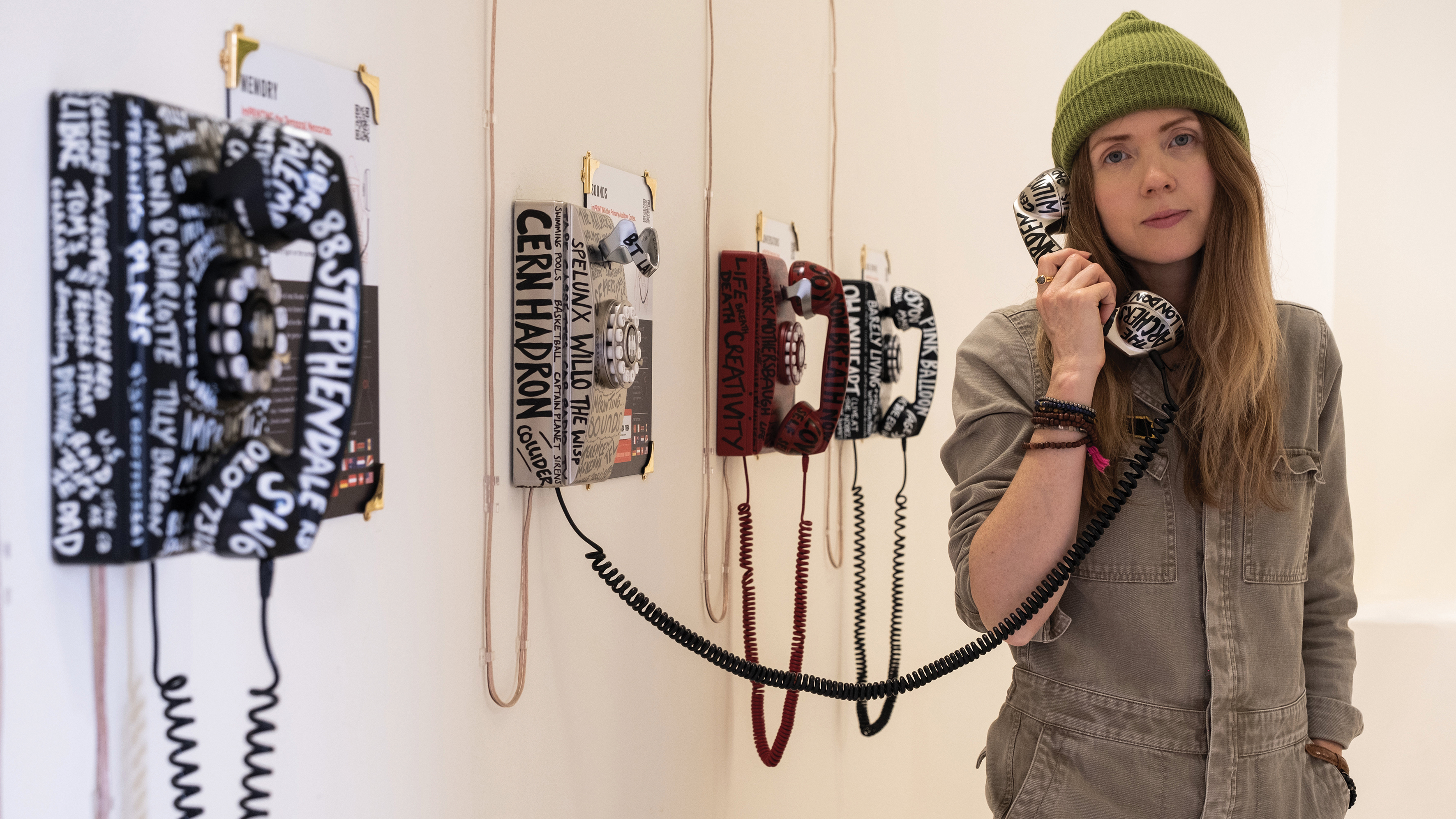
Beatie Wolfe has long-defied simple categorisation. Originally hailing from South London, but now based in Los Angeles, Beatie’s formative passion for crafting acoustically-oriented songs would lead her on a journey far beyond that which many songwriters undertake.
As a globally renowned artist and public thinker, Beatie has conceived numerous groundbreaking musically focused (or musically linked) visual and aural art projects. These include creating the world’s first 360° AR live-stream from the Bell Labs’ anechoic chamber, beaming her music into space in association with NASA and, perhaps most critically, crafting From Green to Red – an environmental art piece about humanity’s impact on planet Earth, developed from 800,000 years of CO2 data. She’s regarded as a passionate musical explorer, delivering lectures and TED talks on its power to heal, transform and define the human condition.
Her 2013 debut album, 8ight, set the tone for Beatie’s career, with the LP’s enrapturing set of songs twinned with a unique world-first 3D interactive app. This created an engrossing palm-top 3D theatre experience that enhanced the listening process. This was followed up in 2015’s Montagu Square with a collaboration with iconic tailor Michael (Mr.) Fish, who created an innovative ‘musical jacket’, weaving the sound waves of the album’s tracks into fabric and thus making the record entirely wearable.

Pushing further boundaries, 2017’s Raw Space utilised the Bell Labs anechoic chamber. Within what is considered ‘the quietest place on Earth’, Beatie streamed the world’s first live 360° AR stream, allowing global viewers a route to experience Beatie live in this astounding environment. The record would later be broadcast into the outer reaches of space; something that very few artists can claim.
Nearly a decade ago, Beatie, co-founded the charity Music for Dementia, based on research Beatie herself had done into how music can still spark a response from those who are suffering from extreme memory loss. In her latest installation, imPRINTING, Beatie digs further into the deep subconscious interactions between music and the self.
Consisting of eight rotary telephones, playing back audio recorded across decades – and captured on a groundbreaking new storage medium (we’ll come to that…), imPRINTING features fragments of conversations with luminaries and friends from different fields (including her good pal, Brian Eno), songs both new and old, as well as echoes of Beatie’s own childhood via snippets of sound from early birthdays and other long-forgotten memories.
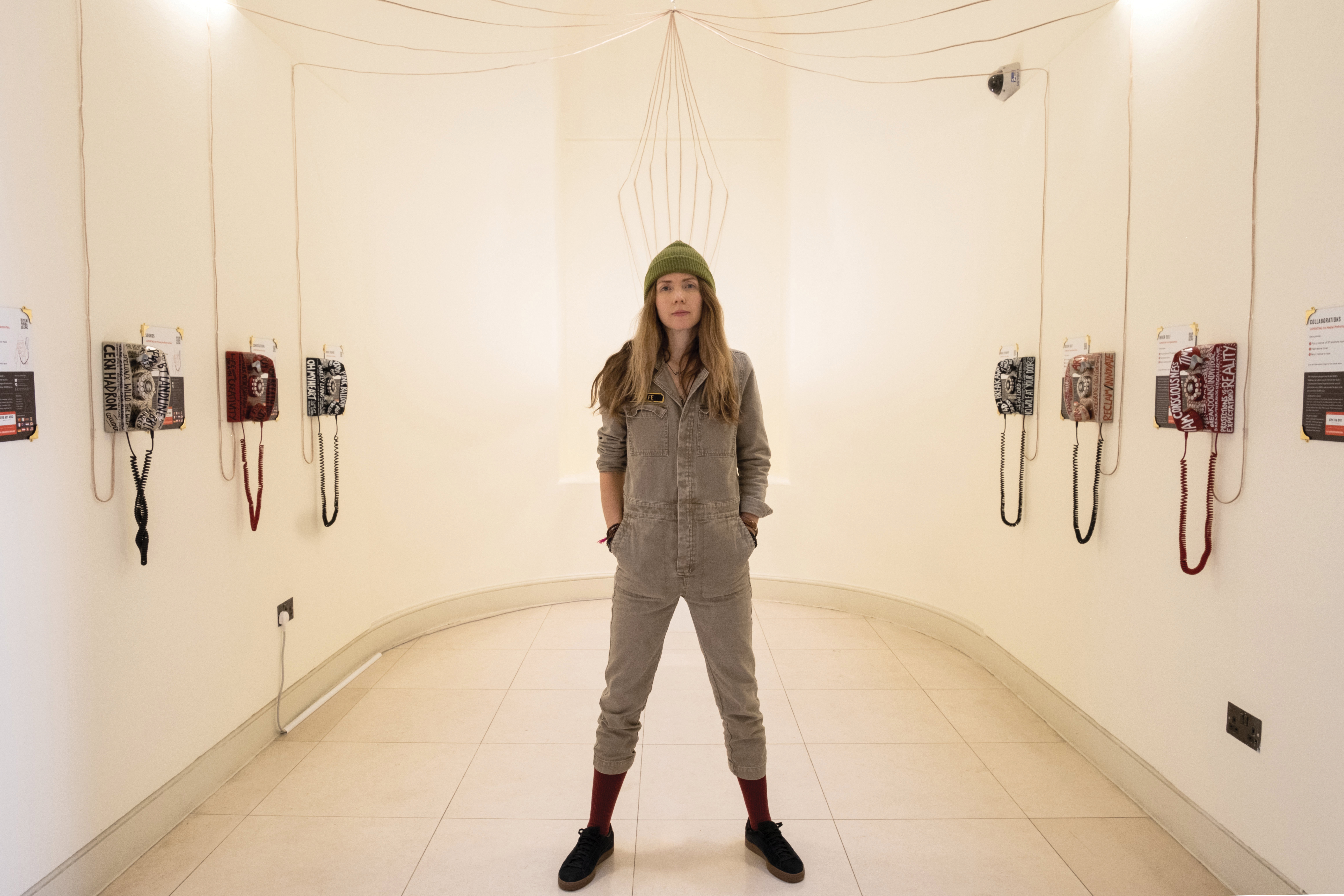
Meeting Beatie outside the exhibition, we had countless questions, but we began by asking what motivated her to develop this new installation. “I had been thinking about a version of this idea for quite a long time. Probably about four years,” explains Beatie.
Want all the hottest music and gear news, reviews, deals, features and more, direct to your inbox? Sign up here.
“I tend to have an idea and it happens very quickly. So, this one was peculiar as originally it started out as something quite different. It started out as a way of taking people inside a radio, which was supposed to be exhibited at the Art Institute of Chicago in 2020, then Covid happened and so it didn’t happen. I thought that maybe it was meant to be something else.”
Beatie elaborates that though she’d been working on quite divergent projects to do with more global issues, she was hungry to return to a project that fit into the music tech space. “I realised that I’d never done something that was focused entirely on audio; I’d done these other areas of exploration from ecology to philosophy and science, and thought what if one could be both artist and engineer, that there are numerous other avenues we can explore if we don’t have the blinkers on.
“In this vein, I thought it would be cool to take people inside the artist’s brain and show people how multi-stream and multi-channel it is. It would be a ‘sonic self-portrait’ in a way, but also would tap into something that was quite collective. I wanted to show that multi-dimensionality that we’re often not really allowed to explore.”
Sonic imprints
The project certainly shares a spiritual through-line with Beatie’s Music for Dementia work, yet could be relevant to all of us – just how does music work? And what does it do inside all of our brains to evoke the feelings and sensations that it does?
“What are the things that have gone in deep? What music and sounds have stayed with you and become embedded?” Beatie asks. “What are the sonic imprints within your brain? There’s a real honesty about those imprints. It’s stuff that might not be particularly ‘cool’. In your memory, there’s not a perfectly curated version of yourself, it’s all the big and little things that have shaped you and made you who you are. That aural history lives in your head.”
We wonder how the process of curating the audio was undertaken, and how much of a challenge it was to assemble this installation. “I’ve edited probably around 500 hours of audio in Pro Tools to create the channels,” Beatie recalls. “It’s something that I find fascinating about sound. It’s almost completely imperceivable how much something has been edited or how much work has gone into creating something.
“When you’re looking at a film you can see every time there’s an edit or a cut, you can see the effects that are being used. With audio you really can’t. There was a lot of processing, and a lot of recording. The Inner Self channel is all diary entries, taken from journals I wrote when I was 11-19, with my voice recorded recently. The memory channel is made up of early home movies which I was pulling the audio from.”
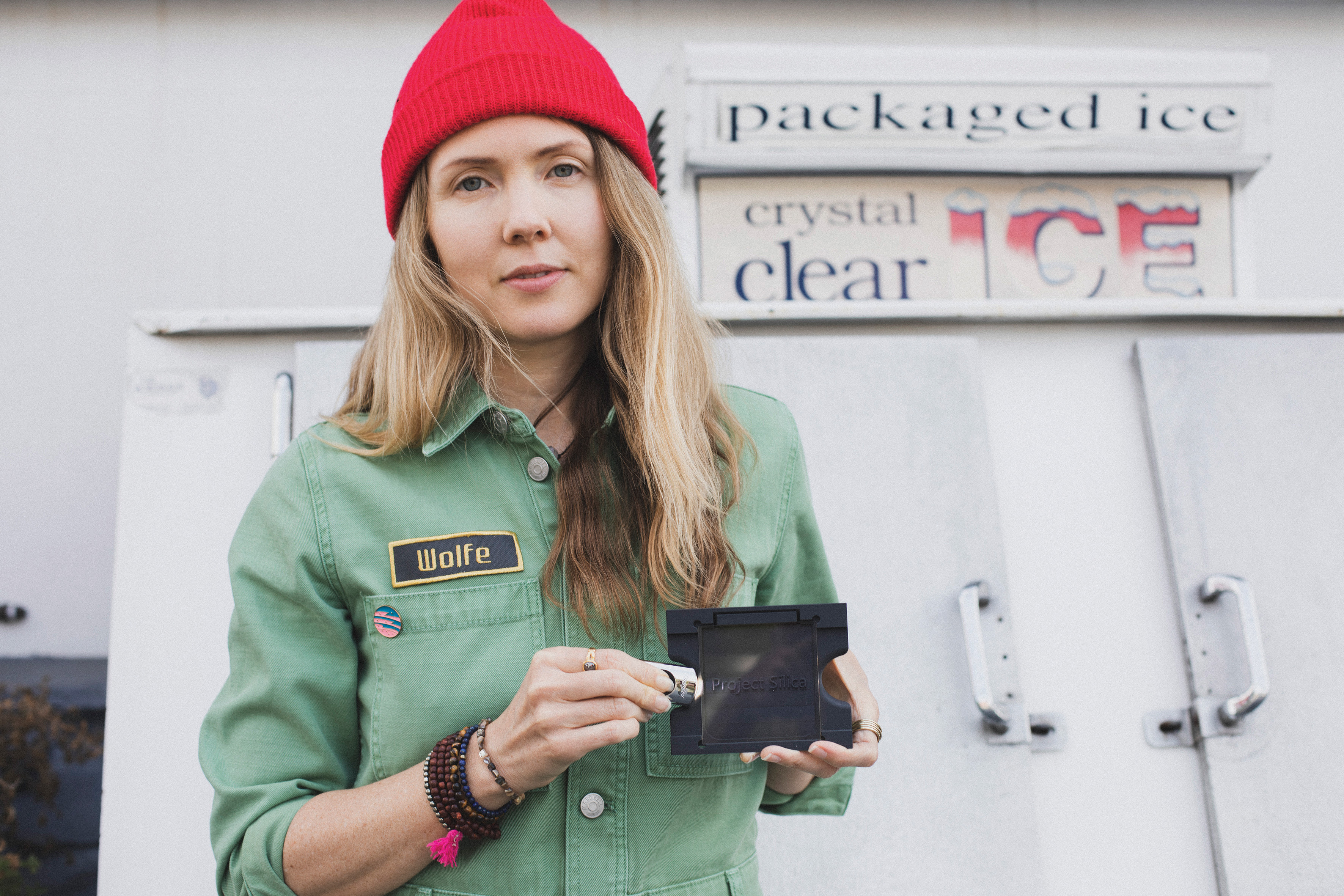
A further groundbreaking aspect of the installation is the innovative Project Silica storage format which contains all of the audio files used. Resembling a small square of glass, the Microsoft-pioneered format is both ecologically-friendly and really quite mind-blowing. “It’s called Project Silica and it’s a new way of writing data into pieces of glass,” Beatie explains. “One single glass platter holds a terabyte of data, so it’s a huge amount of data that’s stored in a very small piece of glass. It’s written using ultra-fast lasers and retrieved using AI and microscopes. The data is stored as cold, inert data and does not use any energy until you need to retrieve it.”
For the imPRINTING exhibition, these glass platters are housed within a retro-futuristic ‘Thinking Cap’ (tailored once again by Mr. Fish), proudly sitting on display at the centre of the installation, with wires feeding out to each of the phones. It makes for a compelling retro-futuristic spectacle, and a slick demonstration of the versatility of this storage format.
Picking up transmissions
With so many major projects, installations and exhibitions under her belt, we wonder if now – as an established force in the intersection of art and music – Beatie still finds time to write music removed from any wider conceptual framework. “Yeah I do, I’ve always felt that there’s a kind of tap that I could turn on whenever I wanted. I remember hearing from producers about artists they were working with who were terrified that they had no more songs or ideas left. I could not relate to that, I’ve always felt like the songs are there if I need them.
It doesn’t feel like I’m sitting there trying to write or create something, it feels more like I’m an antenna that is receiving transmissions from somewhere else
“With all of the work, as different as it may be, it feels like it happens in the same way. It doesn’t feel like I’m sitting there trying to write or create something, it feels more like I’m an antenna that is receiving transmissions from somewhere else, ideas that are meant to exist. So in a way, I feel like I’m the custodian of the projects. There’s something wonderful about that, as you don’t really feel like it’s you.”
Typically writing in her LA-based home studio, songs such as the scintillating Little Moth and the cinematic How Can I, would often arrive fully formed: “The whole song would come together – lyrics, melody, guitar or piano part – I’d record using whatever device I had available to me with a feeling that something was happening. Then a whole song would come out. After I would transcribe it from listening to the recording. It’s a magical process, because you see it as a film almost, like it’s already there, and you’re just bringing it into being.”
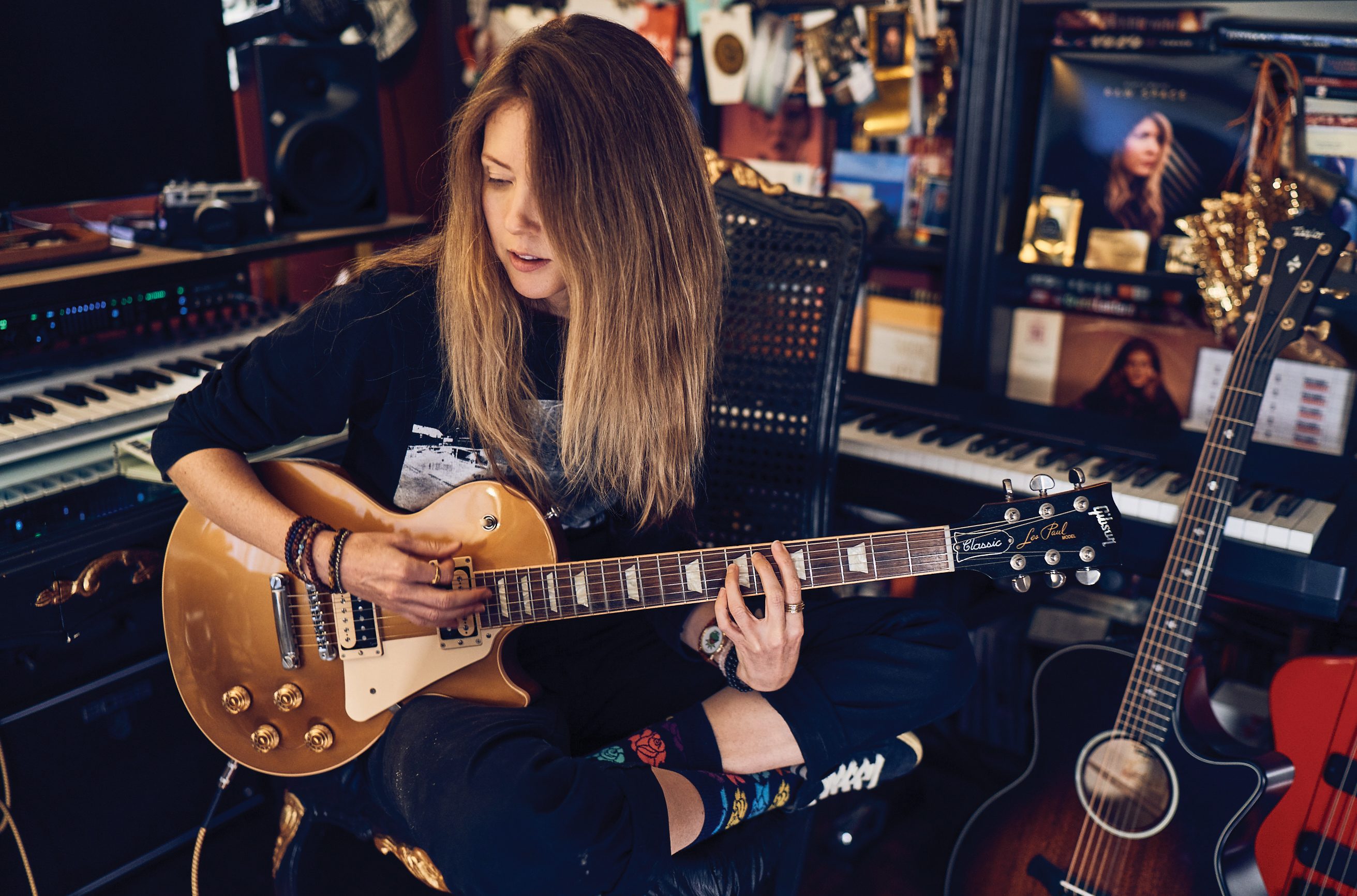
From a songwriting perspective, the ‘tuning-in’ approach is something that Beatie strongly advocates: “One thing I’ve been doing more recently, that I really recommend, is to record/produce as you write. For me, it’s been a wonderful new way of songwriting. In the past I would write a song and there’d then be a process of rehearsing it before going into the studio to record it ‘properly’. Within that time you’d likely change and analyse elements and by the time you’d got to the studio you might have lost something in the process.
“The number of songs I’ve recorded recently, as they were coming in, without analysing them and allowing that process of experimentation to show me new things. It’s almost like through the recording (and production) process you’re revealing a song that might not have been otherwise and capturing that raw spontaneity in the moment, before you start overthinking it.”
While Wolfe’s concerns are obviously fixed on much wider topics (particularly the issues surrounding climate change, an area in which she’s increasingly becoming a prominent voice) we naturally felt obliged to ask her about her preferred production choices. “In the past,” she says, “I’d always co-produce. But with that sometimes your sensibility or instincts would clash, they’d want to clean things up, make it more polished. So recording these recent songs myself, in my studio, was a return to embracing the raw and experimental again, being free to follow what I liked and wanted to explore.
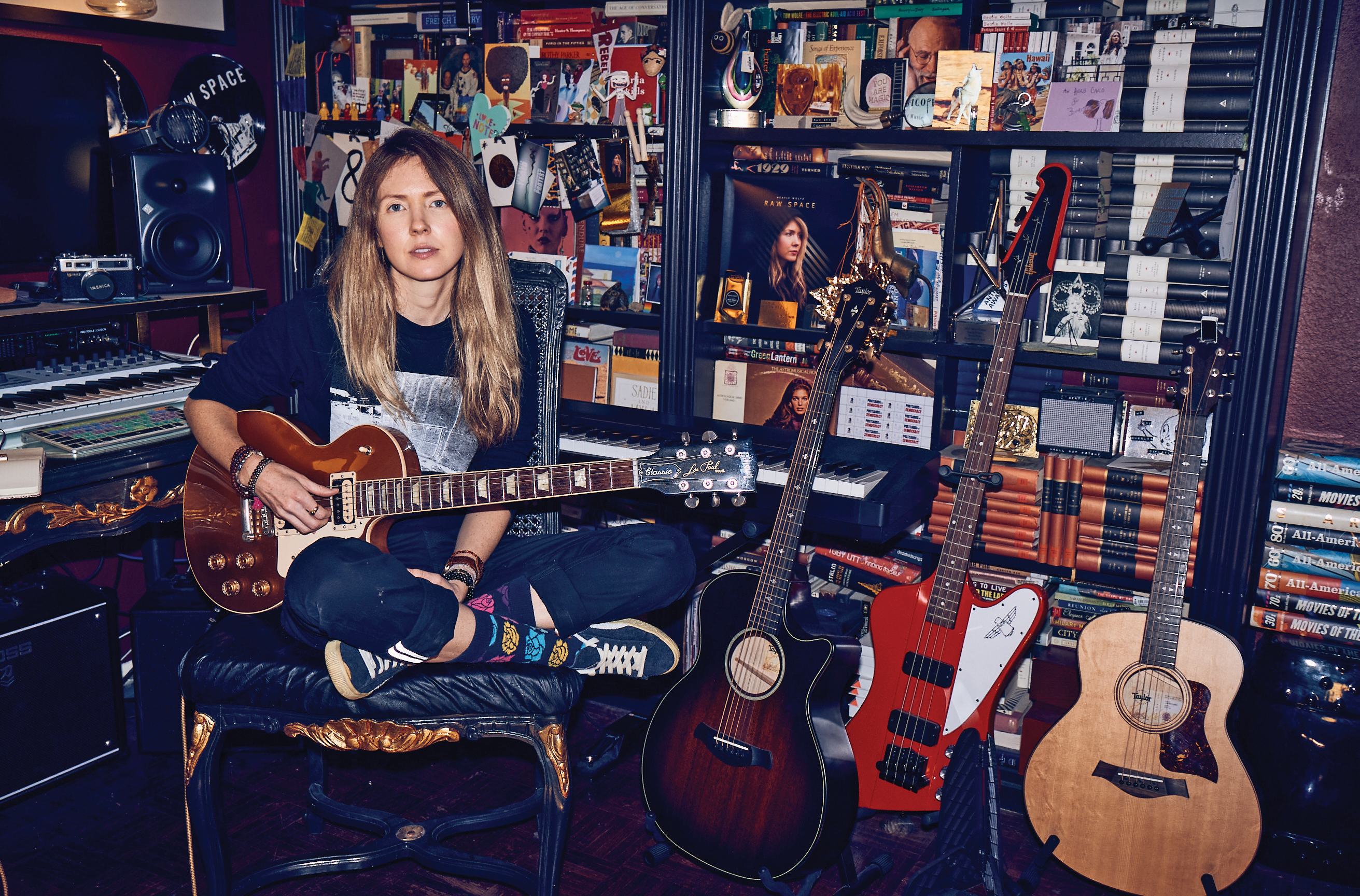
“And there’s a fascinating paradox that when you don’t know exactly what you’re doing, you often come out with really good stuff. Being in that space where you’re out of your comfort zone, when you’re out in the ocean and you can no longer touch the bottom, that’s where the best stuff happens. Because often when we start knowing more we can create blueprints that limit creativity. And really art is about surrendering.”
Beatie explains that each of her songs started with a completely fresh approach, with no preset framework for working: “I’d approach them completely fresh, whether that was instruments used or settings or plugins in the chain, each song would need something different. It was a good mode for the music, but I think it’s just a good mode in life. It’s like with all of my projects, every one of them is entirely different, there is no blueprint. So it really is like starting fresh every time.”
The three pillars
In a recent TEDMED talk, Beatie explained how she perceived the music listening experience as being made up of three core elements: storytelling, tangibility and ceremony. We wonder how fundamental these three concepts are to her, and what her thoughts are on the current state of play in the music world of 2023?
They are my pillars – ceremony, tangibility and storytelling. They started out as reference points. I didn’t think they would stay so relevant
“They are really central. Of course one changes, and the work changes, but then also nothing changes in terms of the ethos and the philosophy. They are my pillars – ceremony, tangibility and storytelling. They started out as reference points. I didn’t think they would stay so relevant. But I kept returning to those three components because that’s what we had in the physical era, not just with music but with any medium that has now been digitalised.”
It’s clear that Beatie sees the decline of physical music listening formats as part of the reason why, for many, music has lost its potency. “We once had an art form, or physical form, that had the ceremony and ritual of setting it up, then we had the story aspect that it was able to tell, and by having those elements it made us present. That presence allowed the music to go in deep and become part of who we are. Because we are so saturated now, there are very few chances for those three elements to come into play.
“I love the idea that you can create something that harnesses some of the most exciting new technologies that can actually help us as human beings, but it seems a lot of technology is working as a narcissism amplifier. To use technology where technology is really supporting us being on the planet at this time in a way that is minimising our impact, that’s what I get excited about.”
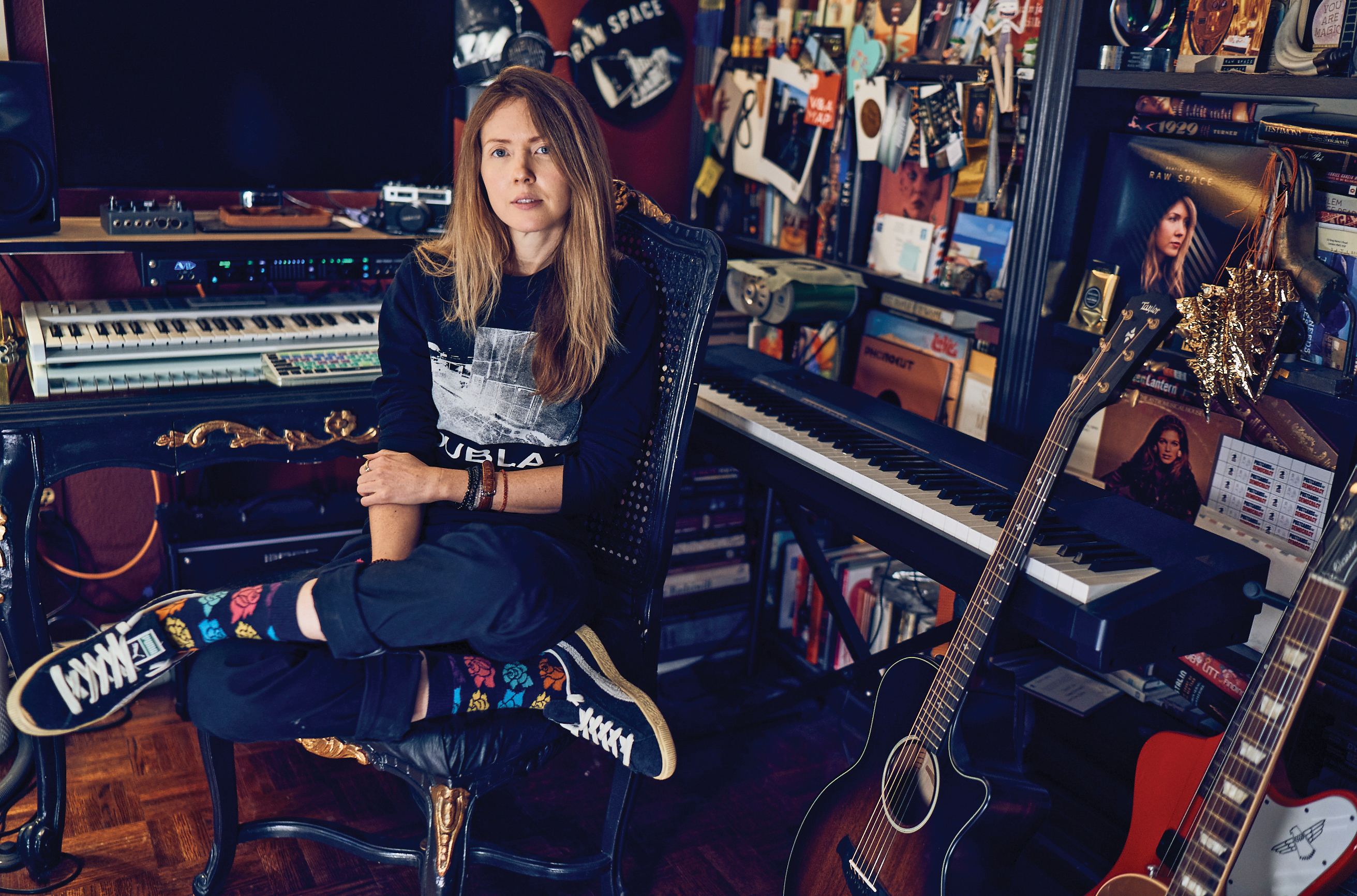
While the ceremony and ritual of the music listening process may be absent in today’s quick-paced, streaming-dominated landscape, we wonder how Beatie feels about the current state of the music production process?
“I do feel that it’s similar. To have the means to iron out all the imperfections and quantise and tune everything; that is a problem because it’s really the imperfections that actually move us. It’s the things we wouldn’t program that make us connect with something. It’s Leonard Cohen’s weird voice, or Nina Simone’s timing and erratic outbursts. It’s that humanity that we respond to, not the perfect sheen. So, I think what’s happened is that we’ve become less intentional in the creation process. We know we can get instant feedback and gratification and, in theory, make ‘perfect music’.”
To have the means to iron out all the imperfections and quantise and tune everything; that is a problem because it’s really the imperfections that actually move us
“I remember when I was younger, before I had a mobile phone, the way I wrote songs was disconnected from thinking about any kind of response or reaction. I was so in that moment, disconnected from the feedback loop. You created with a different kind of energy and intent,” Beatie recalls, “because we can now make tracks and can release them so instantly, we can get validation and that has become something of a trap. We’re almost thinking about it while we write and mix.”
While Beatie’s points are entirely valid, and we largely agree, we’re keen, of course, to accentuate the positives of digital music creation. “Obviously, the positives are there,” she says. “It’s great that there is more freedom and more access for people. In imPRINTING, there’s a channel of unreleased music that I wrote during lockdown. It was wonderfully freeing because I could do it all myself and working in this way opened up more avenues of creativity. But I think that just like not all innovation or ‘progress’ is good, there’s as much we need to reclaim as we need to update.
Healing power
Beatie’s views on the streaming paradigm shifting our collective perception of music is that it’s something currently eroding the power of music. The lack of payment for artists and performers, too, is a further contributing factor to music losing its potency.
“I think music is heavily commodified now. It started around 12 to 15 years ago and it’s been such a downhill spiral since then. In terms of the industry, I have nothing positive to say about it. Major labels and streaming sites are getting rich, pushing jingles to a point where it’s so extreme. Because you’ve got 0.01% of the industry making the vast majority of the money and also controlling the way these mechanisms work, controlling what’s popular, and how it’s popular.
“That level of payola is on a whole other scale than it used to be in the radio age. Of course you’ve always had certain players manipulating the industry, but the problem occurs when artists feel like they have to create to satisfy a platform. It completely changes the nature and intention of creation.”
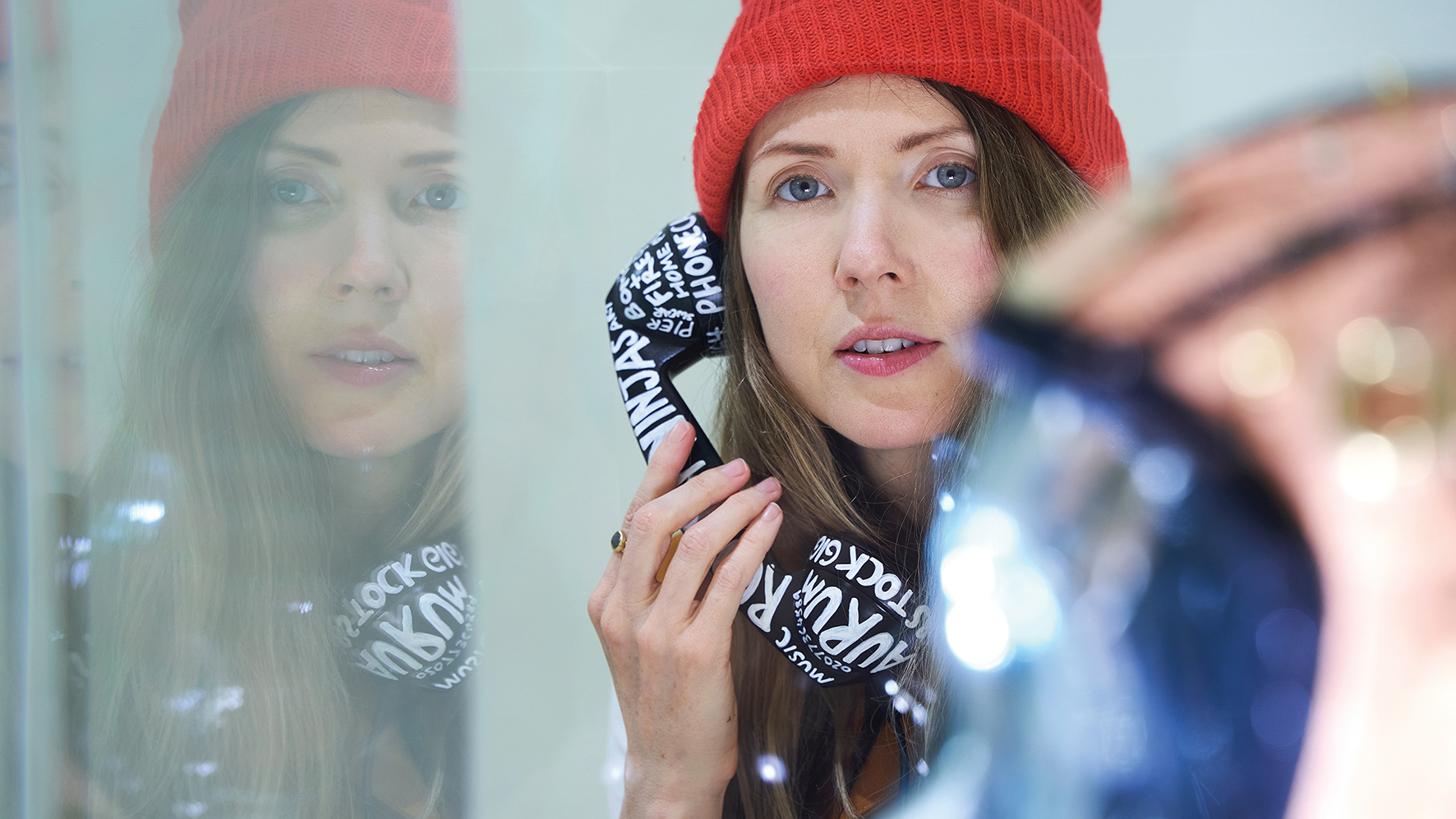
It’s an anger that is borne out of a demonstrable understanding of music’s magical ability to heal: “When you’ve seen what music can do to bring someone who’s catatonic into a dancing state or move someone who’s non-verbal into singing along with songs they’ve not even heard, such incredible reactions to music [exist on] a profound level. It goes far beyond entertainment. It’s the one thing that can bring us back from these otherwise inextricable binds. You really appreciate music and art on a whole new level which is really deeply tied with our humanity.
“So to see it become so disrespected and stripped of what makes it magic to begin with, that’s what I have a problem with. It stops being music and becomes just another commodity. Music is something we still know so little about in terms of what it’s able to do to us, and how it works neurologically. We are only at the tip of a melting iceberg when it comes to understanding its incredible and immeasurable power.”
We ask Beatie what has been the highlight of her multifaceted career? “It’s a hard one. It’s not even that I’m forward-looking, I’m just present-focused,” Beatie says, “I tend to have amnesia in that I don’t have an ability to attach myself to any project. It’s almost like once a project or idea is out in the world it’s off doing its thing. If people enjoy it and it’s activating something, then I’m obviously happy. Often I can forget projects that have happened as I’m really focused on the here and the now.”
To find out more about Beatie Wolfe's upcoming projects and releases, visit her website.


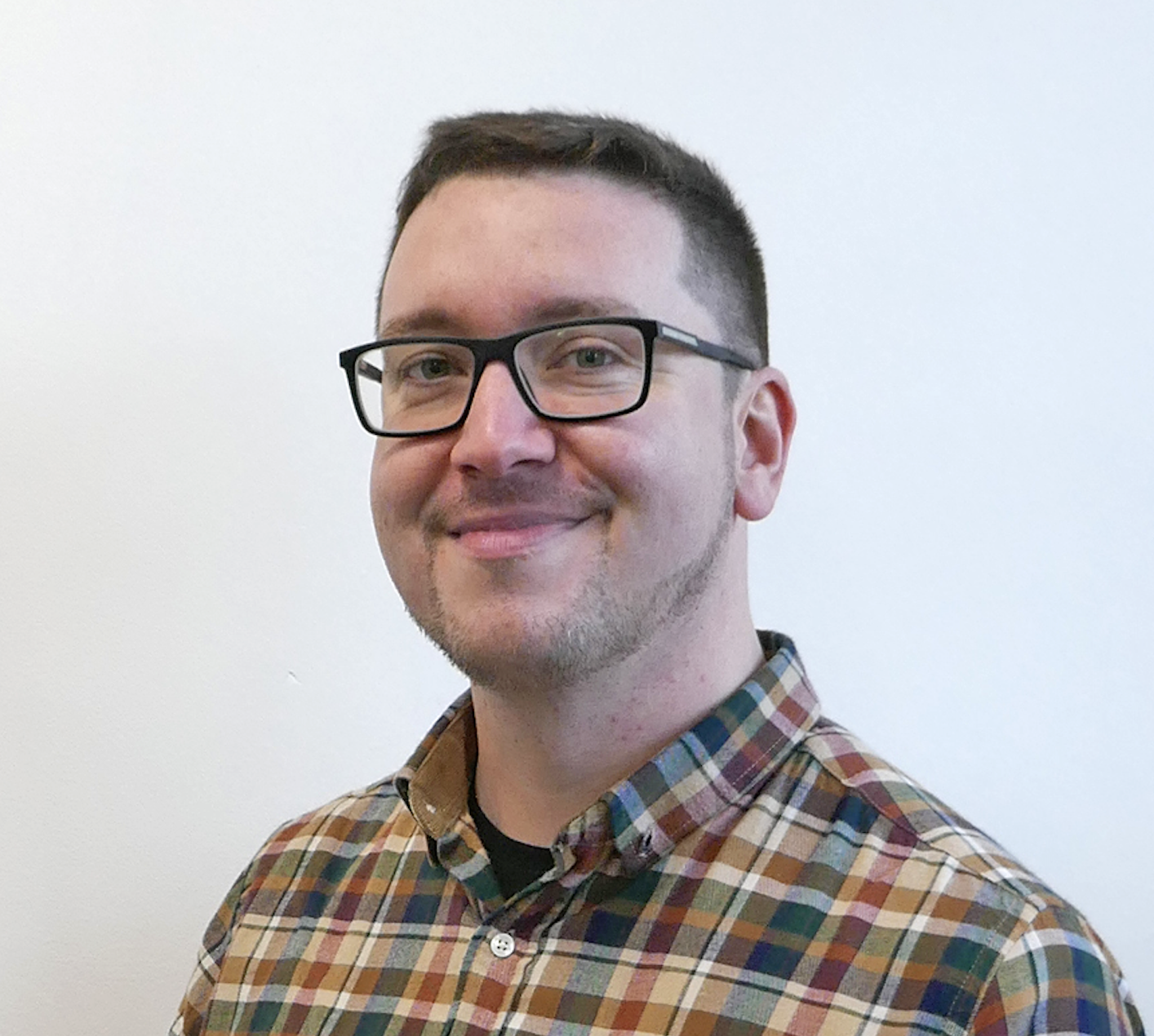
I'm Andy, the Music-Making Ed here at MusicRadar. My work explores both the inner-workings of how music is made, and frequently digs into the history and development of popular music.
Previously the editor of Computer Music, my career has included editing MusicTech magazine and website and writing about music-making and listening for titles such as NME, Classic Pop, Audio Media International, Guitar.com and Uncut.
When I'm not writing about music, I'm making it. I release tracks under the name ALP.